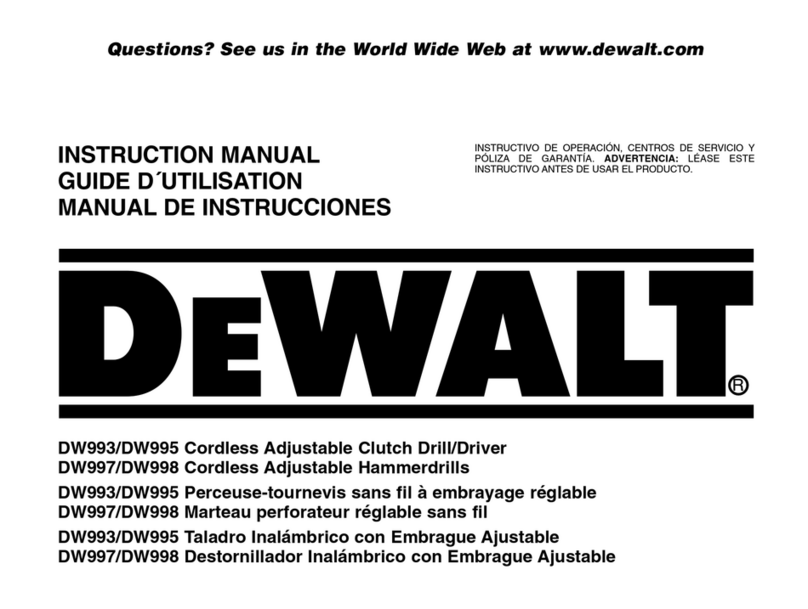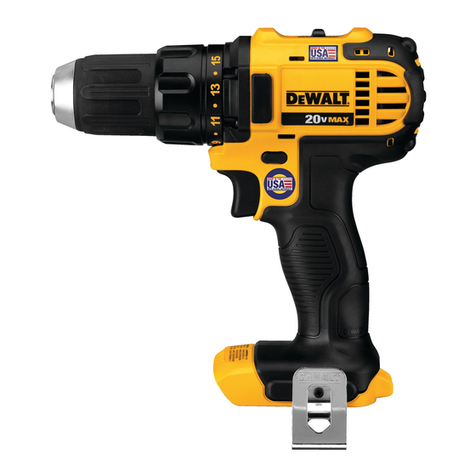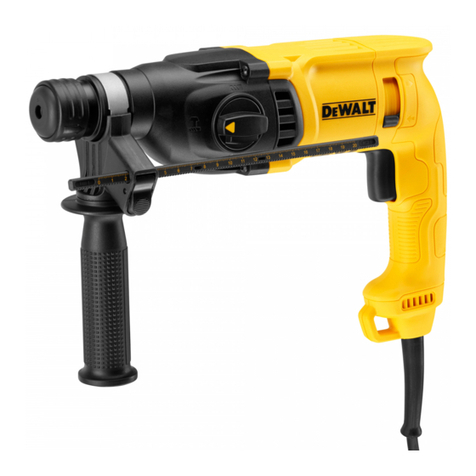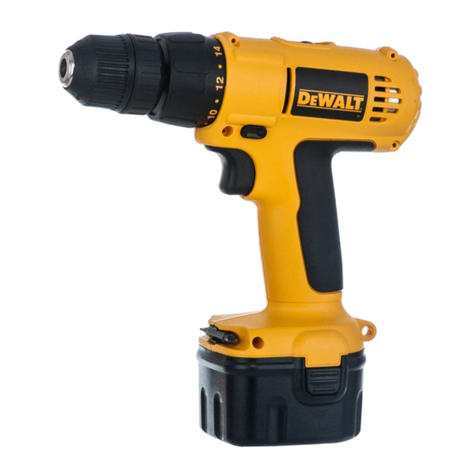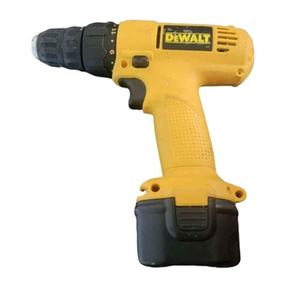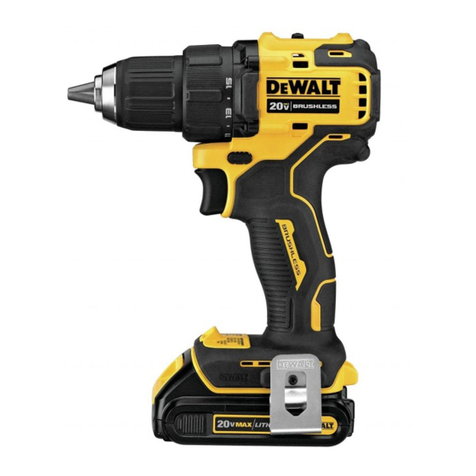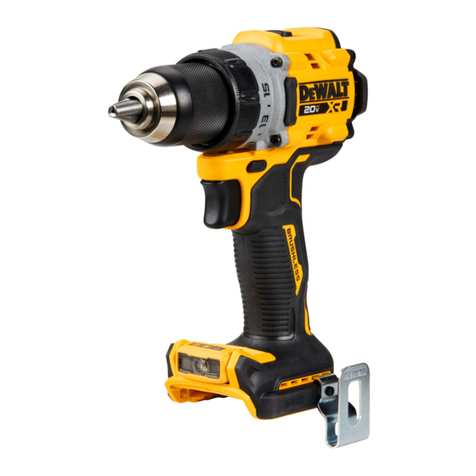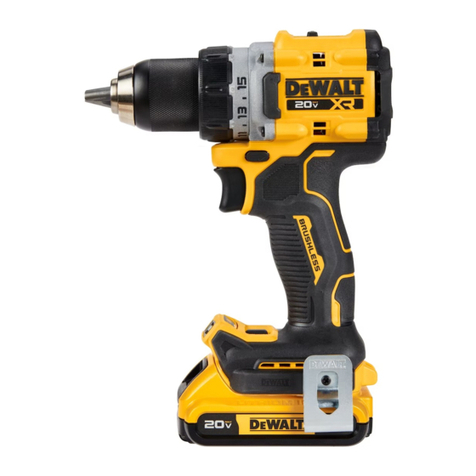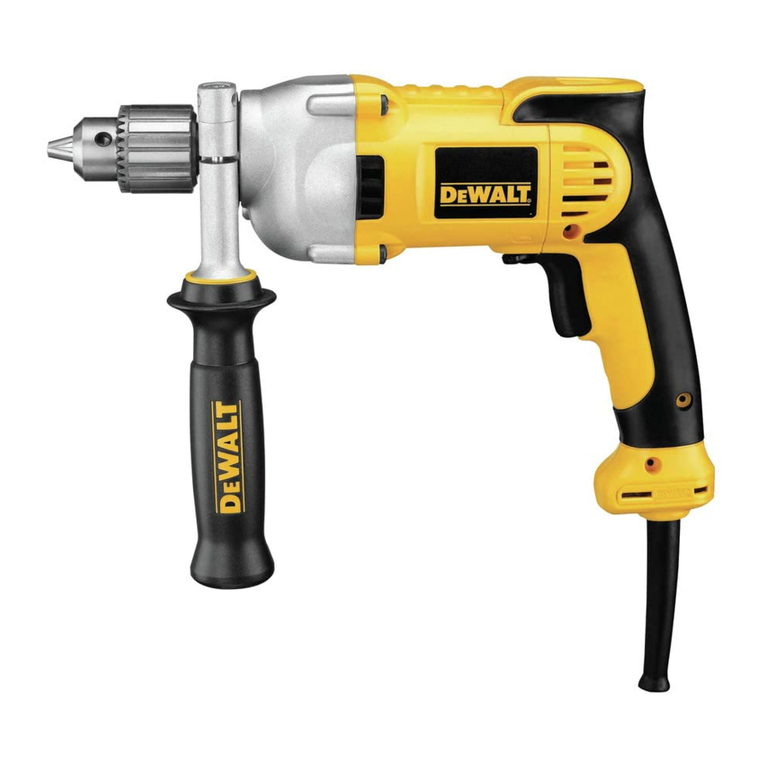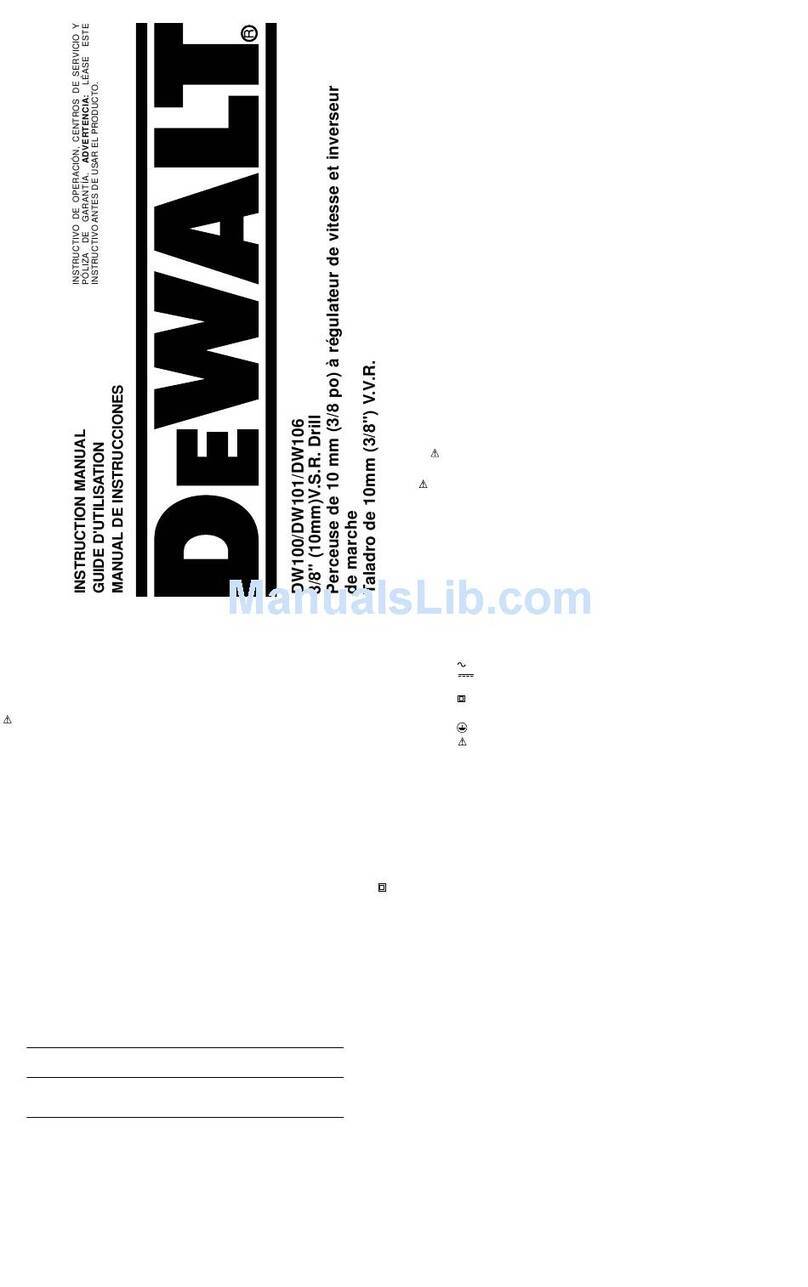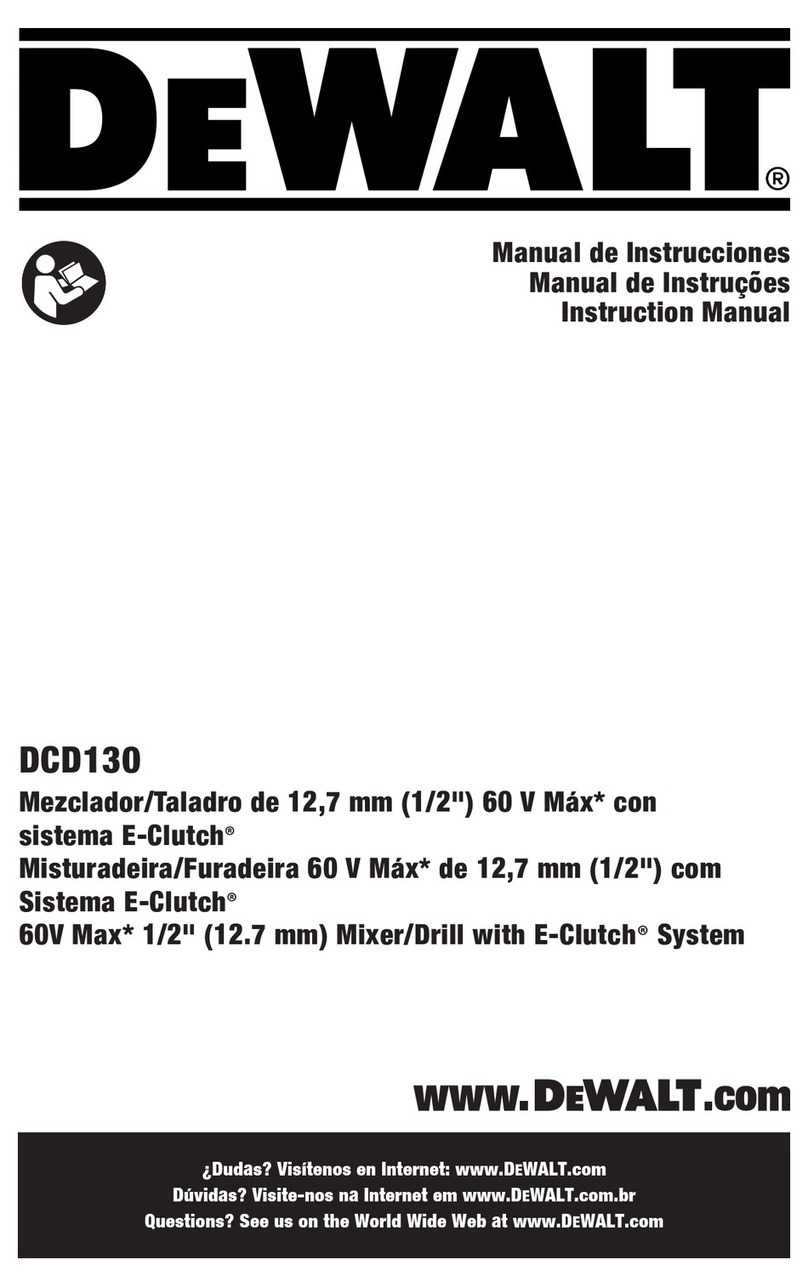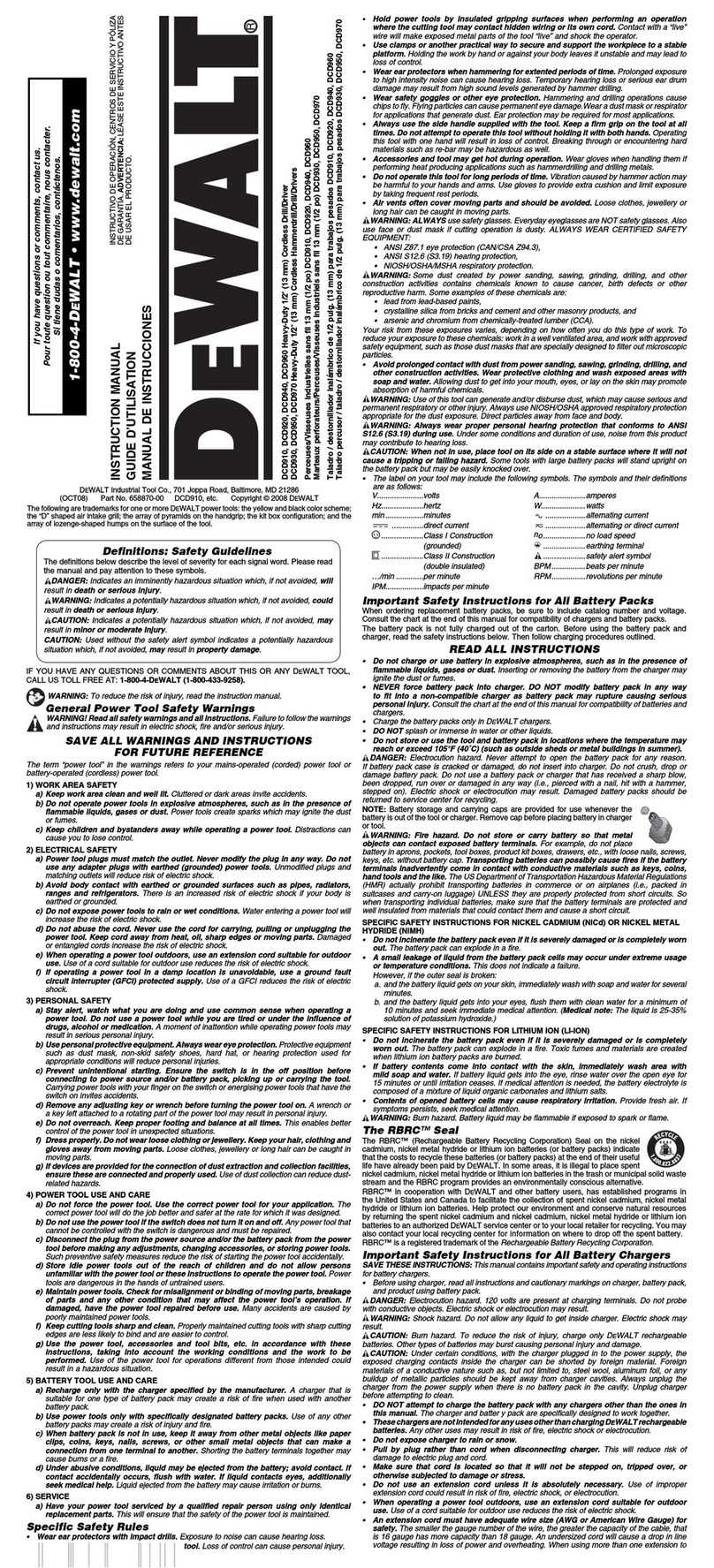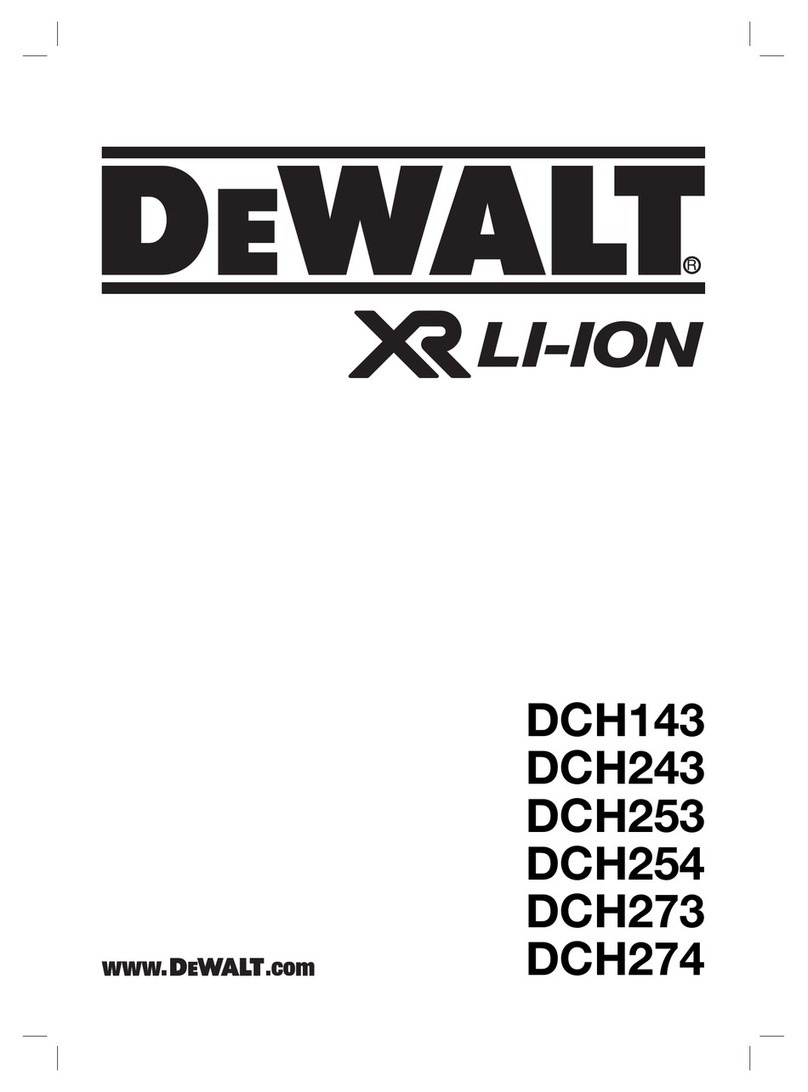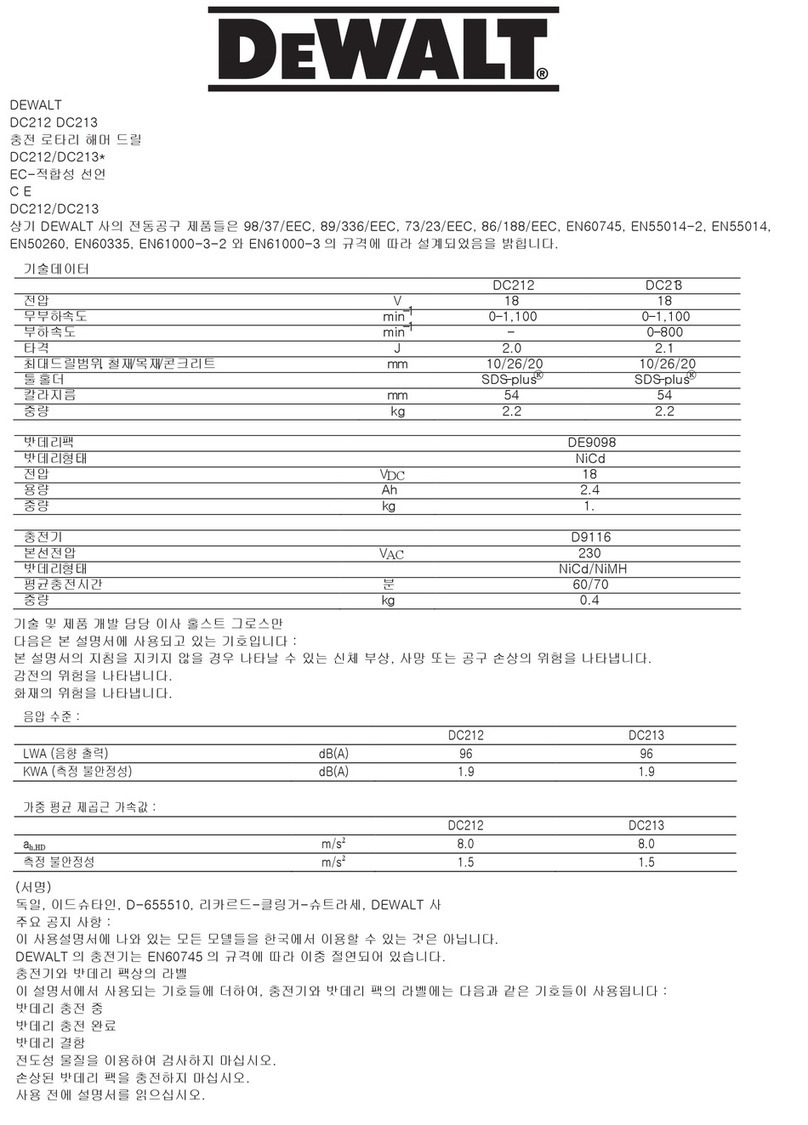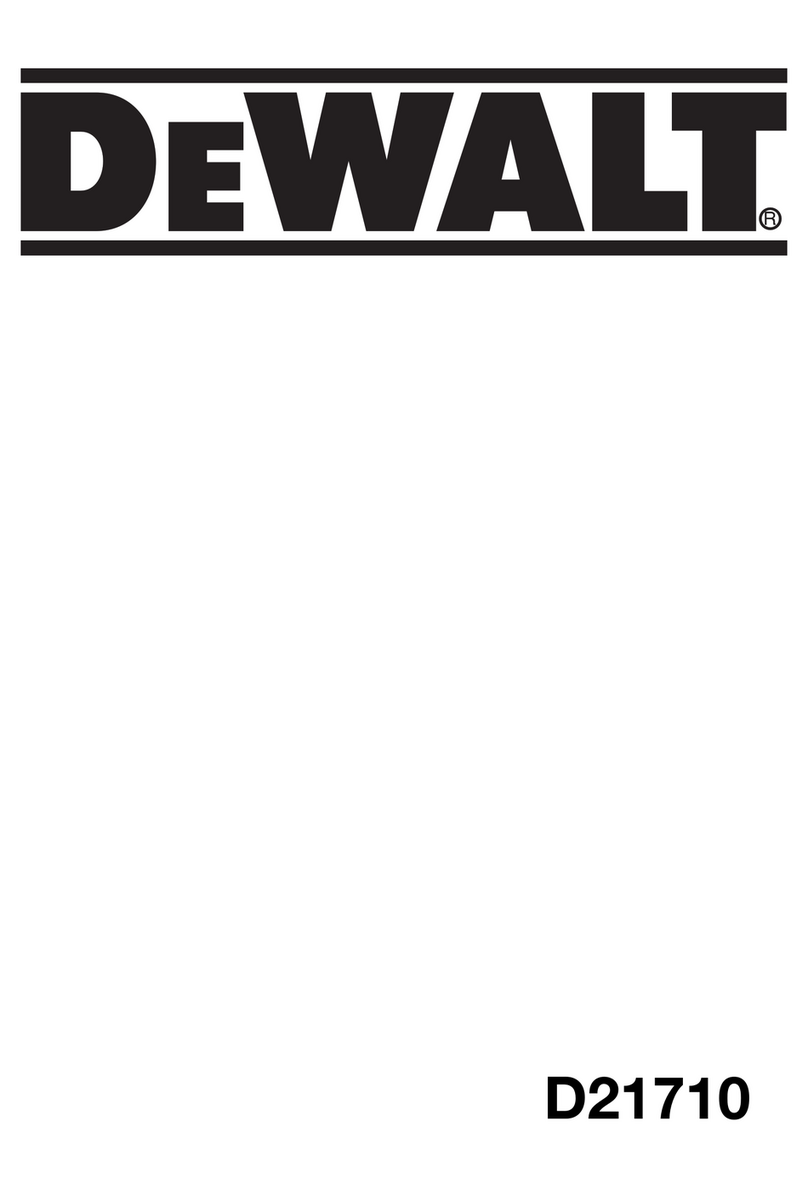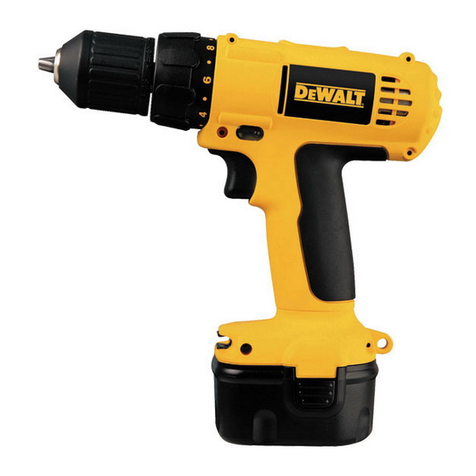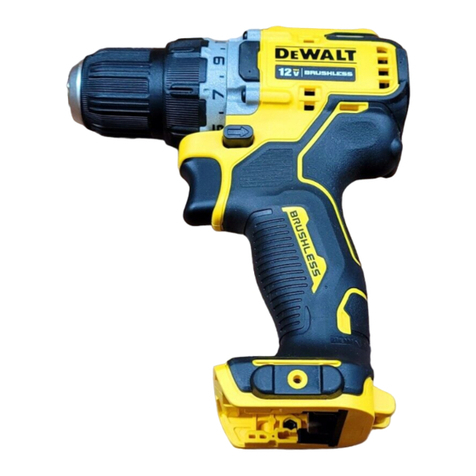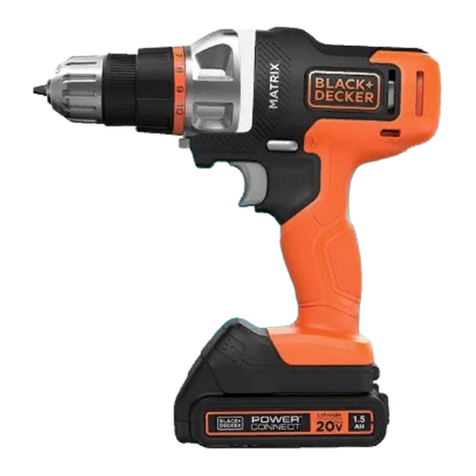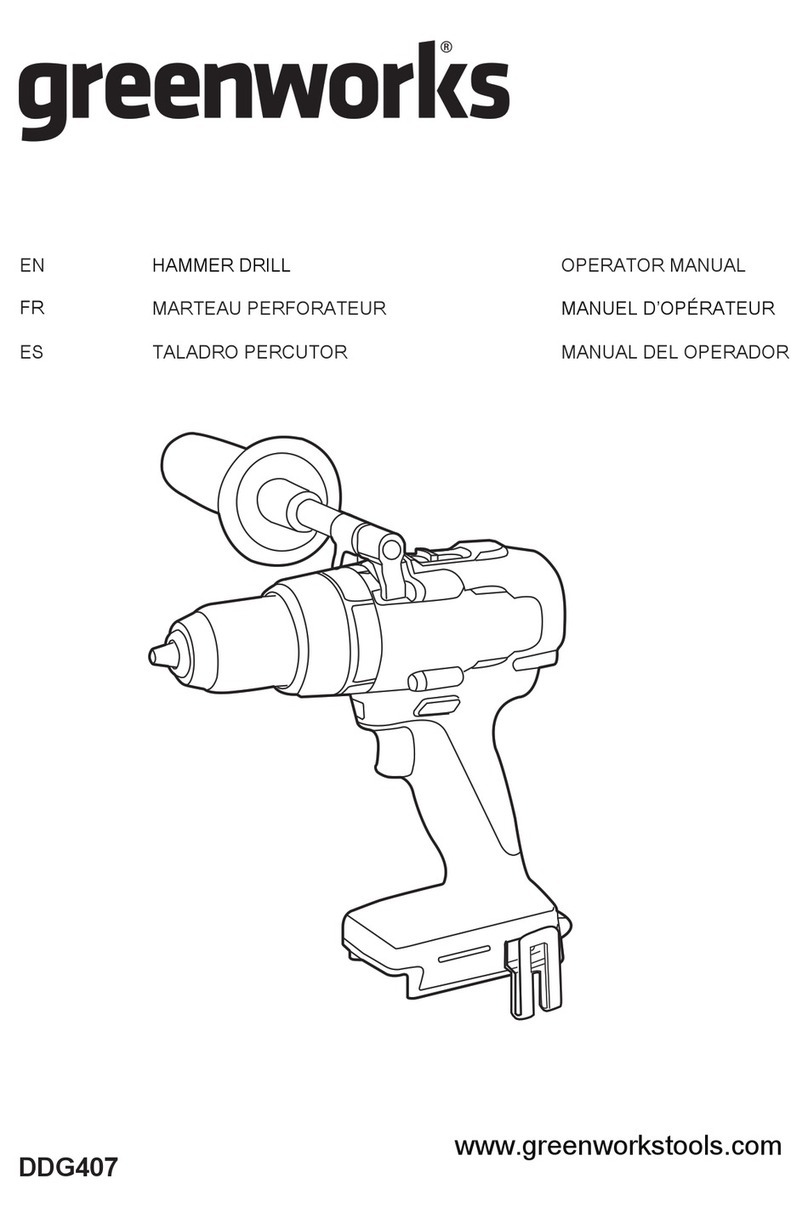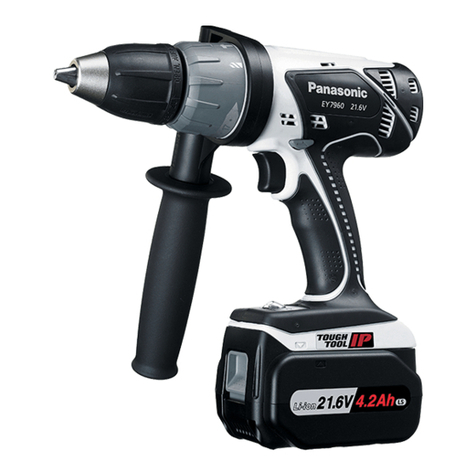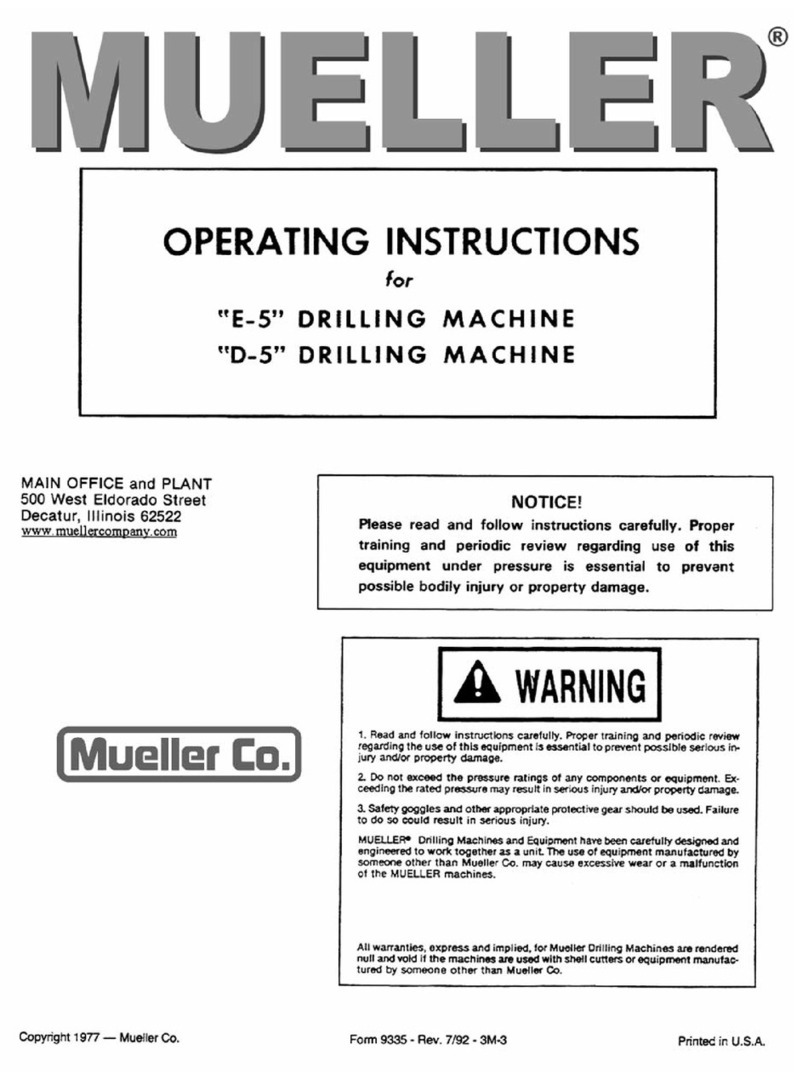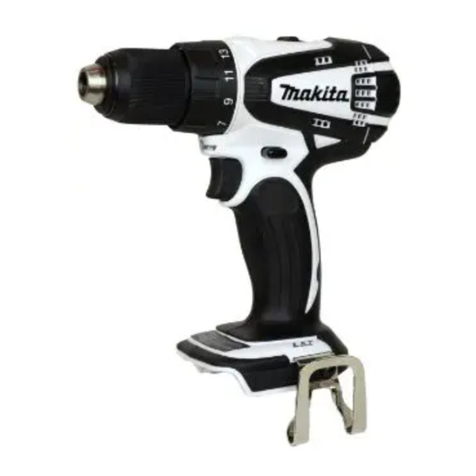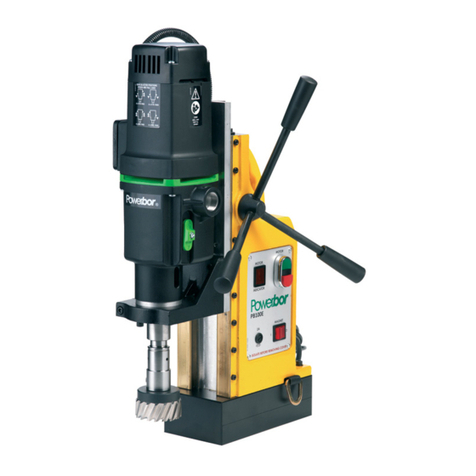
ENGLISH
6
• crystalline silica from bricks and cement and other masonry
products, and
• arsenic and chromium from chemically-treatedlumber.
Your risk from these exposures varies, depending on how
often you do this type of work. To reduce your exposure to
these chemicals: work in a well ventilated area, and work with
approved safety equipment, such as those dust masks that are
specially designed to filter out microscopicparticles.
• Avoid prolonged contact with dust from power
sanding, sawing, grinding, drilling, and other
construction activities. Wear protective clothing and
wash exposed areas with soap and water. Allowing dust
to get into your mouth, eyes, or lay on the skin may promote
absorption of harmfulchemicals.
WARNING: Use of this tool can generate and/or disperse
dust, which may cause serious and permanent respiratory or
other injury. Always use NIOSH/OSHA approved respiratory
protection appropriate for the dust exposure. Direct particles
away from face andbody.
WARNING: Always wear proper personal hearing
protection that conforms to ANSI S12.6 (S3.19) during
use. Under some conditions and duration of use, noise from
this product may contribute to hearingloss.
CAUTION: When not in use, place tool on its side
on a stable surface where it will not cause a tripping
or falling hazard. Some tools with large battery packs
will stand upright on the battery pack but may be easily
knockedover.
• Air vents often cover moving parts and should be
avoided. Loose clothes, jewelry or long hair can be caught in
movingparts.
The label on your tool may include the following symbols. The
symbols and their definitions are asfollows:
V.........................volts
Hz .......................hertz
min.....................minutes
or DC......direct current
......................Class I Construction
(grounded)
…/min..............per minute
BPM.................... beats per minute
IPM..................... impacts per minute
RPM....................revolutions per
minute
sfpm ...................surface feet per
minute
SPM....................strokes per minute
A.........................amperes
W........................watts
or AC........... alternating current
or AC/DC....alternating or
direct current
......................Class II
Construction
(double insulated)
no.......................no load speed
n.........................rated speed
......................earthing terminal
.....................safety alert symbol
.....................visible radiation
.....................wear respiratory
protection
.....................wear eye
protection
.....................wear hearing
protection
.....................read all
documentation
Variable Speed Trigger Switch (Fig.A)
To turn the tool on, squeeze the trigger switch3. To turn
the tool off, release the trigger switch. Your tool is equipped
with a brake. The chuck will stop as soon as the trigger
switch is fully released.
NOTE: Continuous use in variable speed range is not
recommended. It may damage the switch and should
be avoided.
Side Handle (Fig.A)
WARNING: To reduce the risk of personal injury, ALWAYS
operate the tool with the side handle properly installed.
Failure to do so may result in the side handle slipping during
tool operation and subsequent loss of control. Hold tool with
both hands to maximize control.
Side handle10 clamps to the front of the gear case and
may be rotated 360° to permit right- or left-hand use. Side
handle must be tightened sufficiently to resist the twisting
action of the tool if the accessory binds or stalls. Be sure to
grip the side handle at the far end to control the tool during
a stall.
Forward/Reverse Control Button (Fig.A)
A forward/reverse control button4 determines the
direction of the tool and also serves as a lock-off button.
To select forward rotation, release the trigger switch and
depress the forward/reverse control button on the right side
of the tool.
To select reverse, release the trigger switch and depress the
forward/reverse control button on the left side of the tool.
The center position of the control button locks the tool in
the off position. When changing the position of the control
button, be sure the trigger is released.
NOTE: The first time the tool is run after changing the
direction of rotation, you may hear a click on start up. This is
normal and does not indicate a problem.
Torque Adjustment Collar (Fig.B–D)
Your tool has an electronic adjustable torque screwdriver
system for driving and removing a wide array of fasteners.
Circling the torque adjustment collar5 are numbers, a drill
bit symbol, and in some models, a hammer symbol. These
numbers are used to set the tool to deliver a torque range.
The higher the number on the collar, the higher the torque
and the larger the fastener that can be driven. To select any
of the numbers, rotate until the desired number aligns with
the arrow.
WARNING: When the torque adjustment collar is in the
drill or hammerdrill positions, the drill will not clutch. The drill
may stall if overloaded, causing a sudden twist.
Three-Speed Gearing (Fig.B–D)
The three-speed feature of your tool allows you to shift
gears for greater versatility. To select speed 1 (highest
torque setting), turn the tool off and permit it to stop. Slide
the gear shifter6 all the way forward. Speed 2 (middle
torque and speed setting) is in the middle position. Speed 3
(highest speed setting) is to the rear.
NOTE: Do not change gears when the tool is running.
Always allow the drill to come to a complete stop before
changing gears. If you have trouble changing gears, depress
and release the trigger switch and try again.
Worklight (Fig.E)
The worklight7 and its switch12 are located on the
foot of the tool. The worklight is activated when the
trigger switch is depressed. The low13, medium14
and spotlight15 modes can be changed by moving the
switch on the foot of the tool. If the trigger switch remains
depressed, the worklight will remain on in all modes.
When on low and medium settings, the beam will
automatically turn off 20 seconds after the trigger switch
isreleased.

